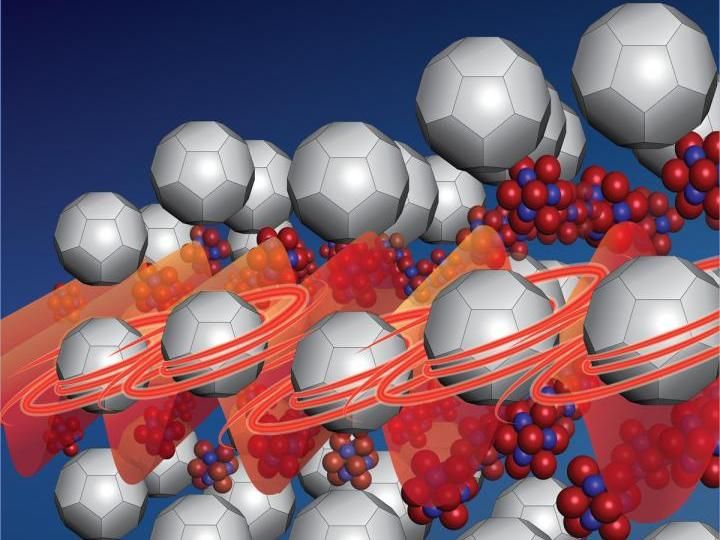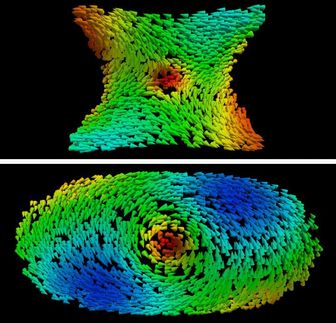Researchers design solids that control heat with spinning superatoms
Researchers found that the thermal conductivity of superatom crystals is directly related to the rotational disorder within those structures.

Rotational disorder affects thermal conductivity in superatom crystals.
Ryan Hastie, Department of Chemistry, Columbia University
Carnegie Mellon University's Associate Professor of Mechanical Engineering Jonathan A. Malen was a corresponding author of the paper titled "Orientational Order Controls Crystalline and Amorphous Thermal Transport in Superatomic Crystals."
Superatom crystals are periodic--or regular--arrangements of C 60 fullerenes and similarly sized inorganic molecular clusters. The nanometer sized C 60s look like soccer balls with C atoms at the vertices of each hexagon and pentagon.
"There are two nearly identical formations, one that has rotating (i.e. orientationally disordered) C 60s and one that has fixed C 60s ," said Malen. "We discovered that the formation that contained rotating C 60s has low thermal conductivity while the formation with fixed C 60s has high thermal conductivity."
Although rotational disorder is known in bulk C 60 , this is the first time that the process has been leveraged to create very different thermal conductivities in structurally identical materials.
Imagine a line of people passing sandbags from one end to the other. Now imagine a second line where each person is spinning around--some clockwise, some counter clockwise, some fast, and some slow. It would be very difficult to move a sandbag down that line.
"This is similar to what is happening with thermal conductivity in the superatoms," explained Malen. "It is easier to transfer heat energy along a fixed pattern than a disordered one."
Columbia University's Assistant Professor of Chemistry Xavier Roy , the other corresponding author of the study, created the superatom crystals in his laboratory by synthesizing and assembling the building blocks into the hierarchical superstructures.
"Superatom crystals represent a new class of materials with potential for applications in sustainable energy generation, energy storage, and nanoelectronics," said Roy. "Because we have a vast library of superatoms that can self-assemble, these materials offer a modular approach to create complex yet tunable atomically precise structures."
The researchers believe that these findings will lead to further investigation into the unique electronic and magnetic properties of superstructured materials. One future application might include a new material that could change from being a thermal conductor to a thermal insulator, opening up the potential for new kinds of thermal switches and transistors.
"If we could actively control rotational disorder, we would create a new paradigm for thermal transport," said Malen.
Original publication
Most read news
Original publication
Wee-Liat Ong, Evan S. O’Brien, Patrick S. M. Dougherty, Daniel W. Paley, C. Fred Higgs III, Alan J. H. McGaughey, Jonathan A. Malen & Xavier Roy; "Orientational order controls crystalline and amorphous thermal transport in superatomic crystals"; Nature Materials; 2016
Topics
Organizations
Other news from the department science

Get the chemical industry in your inbox
From now on, don't miss a thing: Our newsletter for the chemical industry, analytics, lab technology and process engineering brings you up to date every Tuesday and Thursday. The latest industry news, product highlights and innovations - compact and easy to understand in your inbox. Researched by us so you don't have to.



























































